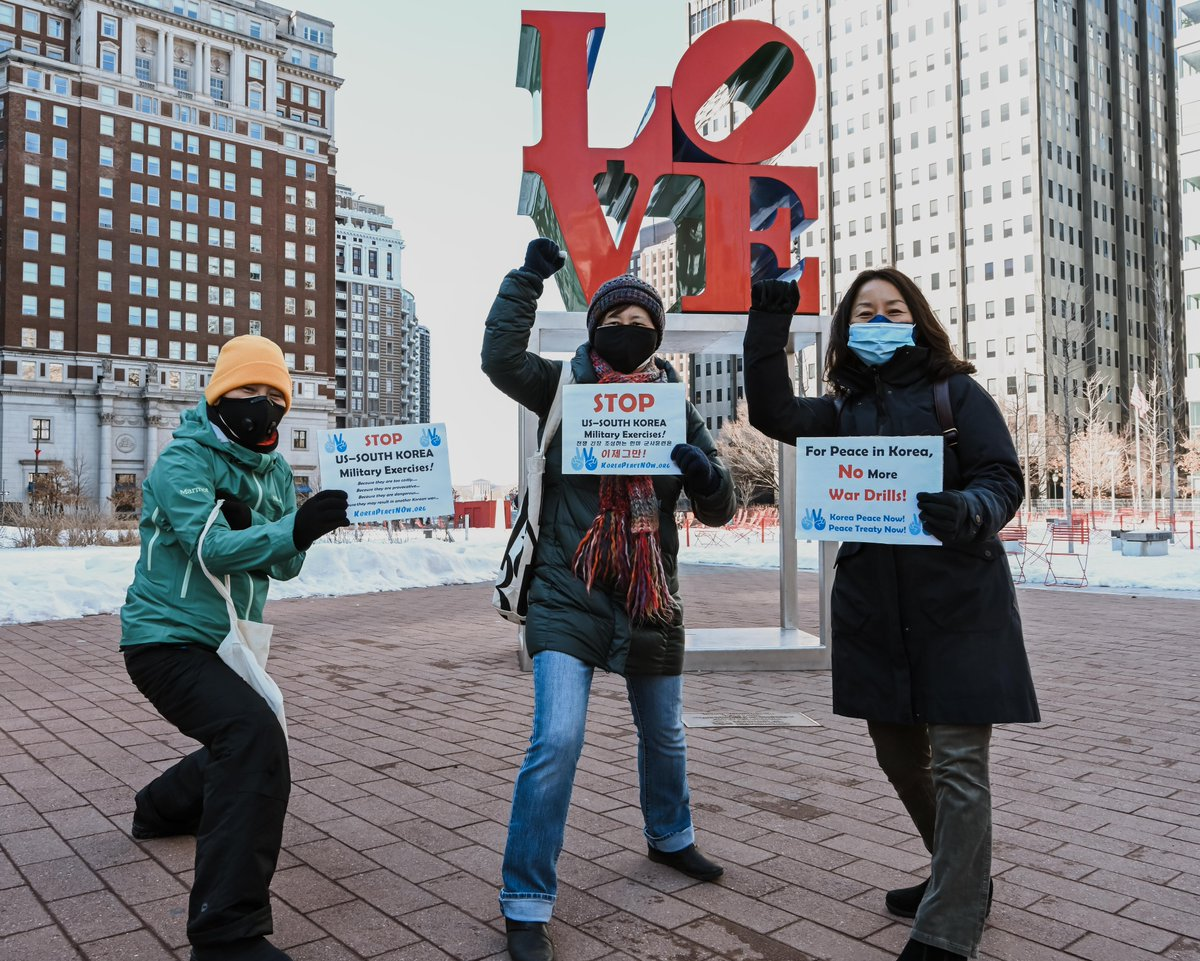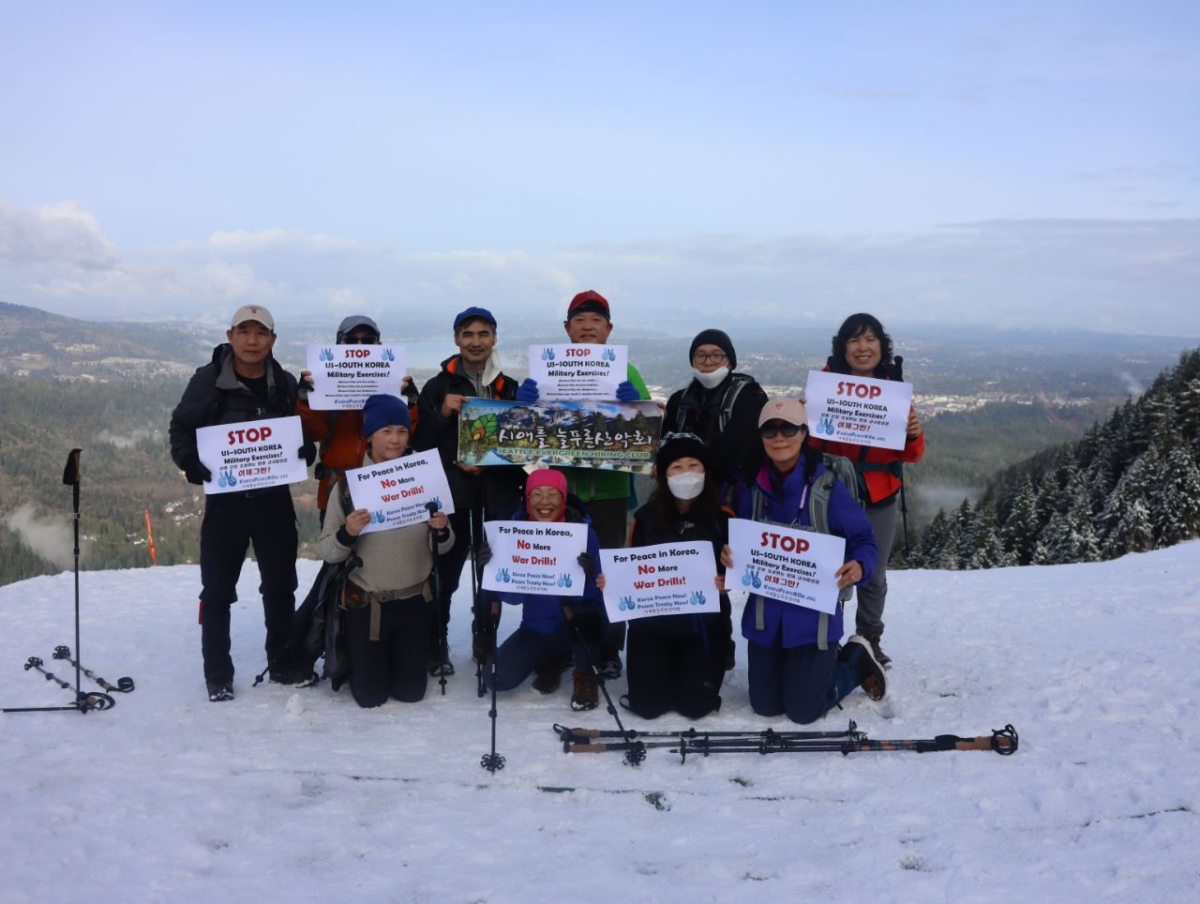
Today, as the United States and South Korea begin their annual combined military exercises, I’m reminded of the two years I spent in South Korea as a member of the U.S. Army and my participation in military war games in 2004.
Like most Americans, I was blissfully ignorant of how these joint military exercises — which simulate war on the Korean Peninsula and have involved tens of thousands of troops — damage the psyche of the local people and raise tensions between the United States, South Korea and North Korea.
As a medic, my role was to set up a decontamination station on the base airstrip in preparation for a chemical attack from North Korea. Like other soldiers, I only focused on my task at hand. The exercises are highly compartmentalized, so one never sees the full picture of the impact of our actions. I only viewed the situation in black-and-white terms — that the U.S. military was the “good cop” protecting South Korea from the “enemy,” North Korea. But as I learned later, the reality is far more complicated.
As part of my stay in South Korea, I went on a three-day Korean cultural excursion offered by Better Opportunity for Single Soldiers, a service offered by the base’s Morale, Welfare and Recreation office. The tour guide shared with us that the Koreas have long been a unified people with a history that extends back to the 7th century. It was only after World War II that the United States and the Soviet Union divided Korea at the 38th Parallel into North and South Korea, without consulting any Koreans.
Because the Korean War (1950-1953) was halted by a ceasefire, the U.S. permanently stationed thousands of troops in South Korea. Military exercises on the Korean Peninsula became a regular occurrence, and they grew in size and scope over the years. The massive Team Spirit exercises that took place from 1974 to 1993, the Key Resolve exercises of the 2010s, and Ulchi Freedom Guardian, which used to take place every August, are just some of the military drills that have taken place in South Korea.

In a recent Truthout op-ed, retired Army colonel and former U.S. diplomat Ann Wright noted that the U.S.-South Korea combined military exercises “have involved the use of B-2 bombers capable of dropping nuclear weapons, nuclear-powered aircraft carriers and submarines equipped with nuclear weapons, as well as the firing of long-range artillery and other large caliber weapons.” These drills often involve troops maneuvering close to North Korea’s borders, airspace and territorial waters.
Not surprisingly, people in North Korea have long seen these yearly military exercises as a threat to their existence and a rehearsal to their invasion.
Yet U.S. leadership downplays North Korean concerns about the military drills and suggests that the North Korean government is overreacting. Former Assistant Defense Secretary Wallace “Chip” Gregson said, “We have to get past our worries about this being somehow provocative to North Korea. It’s like saying having fire departments in downtown Seoul is somehow provocative to fire. North Korea should be given no credibility complaining about any exercises we do that are thoroughly defensive in nature….”
In fact, history shows that suspending the U.S.-South Korea military exercises has been critical to reducing tensions and advancing diplomacy between the U.S. and North Korea. Case in point: President Clinton’s suspension of the Team Spirit exercises in the 1990s led to a breakthrough in nuclear negotiations with Pyongyang that produced the 1994 Agreed Framework. North Korea’s nuclear weapons development remained halted throughout Clinton’s presidency. The agreement was later sabotaged by George W. Bush, who named North Korea as part of the “axis of evil” and then went on to destroy Iraq.
President Donald Trump’s attempts to de-escalate tension with North Korea were dizzyingly inconsistent. On the one hand, he threatened “fire and fury” and Armageddon on the North Koreans. He increased already devastating economic sanctions as part of his counterproductive “maximum pressure” strategy. At the same time, he offered friendly direct talks with North Korean leader Kim Jong Un — an approach never entertained by previous American leadership.
After his meeting with Kim Jong Un in Singapore in 2018, Trump promised to suspend the joint U.S.-South Korea military exercises in the hopes of furthering diplomatic talks with North Korea. But Trump was bombarded by bipartisan criticism, including from some progressives, and the mainstream press went into complete meltdown. South Korean President Moon Jae-in, however, welcomed the move to suspend the joint military exercises as part of the country’s need “to flexibly change its military pressure against the North in the spirit of building mutual trust as agreed in the Panmunjom Declaration.”

Some might ask, “Why doesn’t South Korea simply refuse to conduct the combined exercises?” As it turns out, the Moon administration has its own reason for wanting the drills to resume this year. According to Wooksik Cheong, founder and representative of the South Korean NGO Peace Network, a top priority for the Moon administration in its remaining year in office is the transfer of wartime operational control from the U.S. to South Korea, but this is predicated on the war drills. As background, during the Korean War, South Korea handed operational control over its armed forces to the U.S., and it has never gotten it back. Today, a U.S. commander of the U.S.-South Korea Combined Forces Command has wartime operational control — meaning a U.S. general would automatically be in charge of the allied forces should a war break out on the Korean Peninsula. This arrangement has been described as “the most remarkable concession of sovereignty in the entire world” by former U.S. Forces Korea Commander Richard Stilwell. The key condition required by the U.S. for the transfer of wartime operational control to South Korea is that it must prove through the war drills that it has its own deterrence capability against North Korea. While the Moon administration pushed hard for the inclusion of the Full Operational Capability (FOC) test in this week’s war drills, Pentagon officials have reportedly rejected this, opting to focus the drills on alliance readiness “to fight tonight” instead. In other words, even if the war drills resume this year, there is no guarantee that the U.S. would agree to give back wartime operational control to South Korea.
What’s often missing from the discussion in the United States, however, is the desires of the South Korean people. For decades, South Korean citizens have been protesting U.S. military bases on their soil.
After I left Camp Humphreys in early 2005, South Koreans protested a U.S.-South Korean plan to triple the size of the base. Residents facing displacement from their homes and farmland as a result of the base expansion mobilized to resist the expansion plan.
As a Puerto Rican whose people had resisted the U.S. Navy for decades, I could relate to their plight. Elderly farmers in Daechuri and Doduri, two villages affected by the base expansion, held candlelight vigils at the local schoolyard every night for three years. At times, they were joined by thousands of supporters from across the country. Eventually, the South Korean government mobilized thousands of soldiers and police in riot gear to quell the demonstrations, and over 1,000 villagers were displaced from their homes to make way for what would become the largest overseas U.S. military base.
In 2016, residents in Seongju protested the installation of the U.S. missile defense system Terminal High Altitude Area Defense (THAAD). Sustained protest by local residents forced the U.S. military to supply equipment and construction materials to the base by helicopter.
More military exercises mean more tensions, more weapons, more displacement and the continued risk of renewed war. Although this year’s drills were announced to be a computerized scenario-based training exercise, they are still provocative and will raise alarm bells in Pyongyang. That’s why a global network of nearly 400 U.S., South Korean and international civil society organizations recently sent a joint statement to President Joe Biden urging him to suspend the upcoming war games once and for all:
At a time when the world is facing urgent humanitarian, environmental, and economic crises, these military exercises divert critically needed resources away from our capacity to provide true human security such as healthcare, a sustainable environment and other priorities.
Now they’re calling on supporters to sign an online petition to send to the Biden administration and are holding peace rallies around the globe.
During my stay in South Korea, a young Korean soldier told me that his dream was to one day ride his motorcycle from the southern tip of the peninsula all the way to the northern end — a day when no DMZ (demilitarized zone) separates the Korean people. It’s clear that the people of South Korea want to end U.S. militarism in their homeland and to reunite with their kinfolks in the north. The United States should stop impeding this dream.
